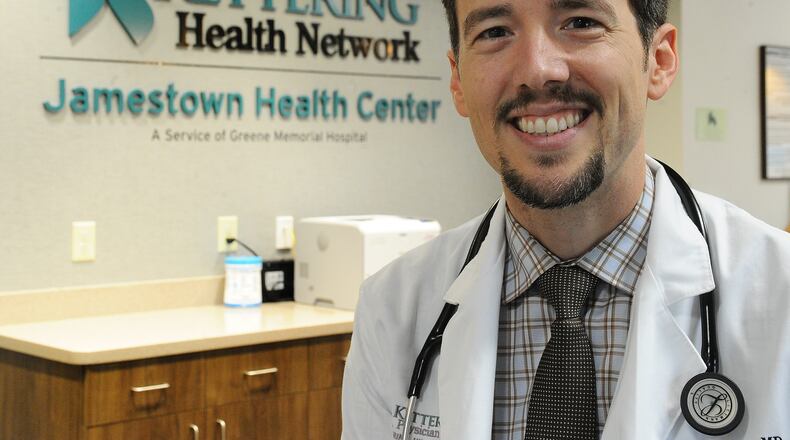“It’s about getting good family physicians trained who will stay and practice in rural Ohio,” said Dr. Wes Halderman, rural site director with the Soin Family Medicine Residency, who is launching the rural residency program this July out of Jamestown Health Center.
Halderman said both incoming doctors to the program, Dr. Virginia Keim and Dr. Haley Rossiter plan to work in rural Ohio.
The need is urgent in parts of rural Ohio, where care can be limited and long practicing physicians leave without new primary care practices to take their place.
While 20% of the U.S. population lives in rural communities, only 11% of physicians practice in such areas, according to the Association of American Medical Colleges.
The gap in providers means some rural patients either have to travel, have waits or forgo care. There’s a shortage of family practices in small towns, but also other types of care like psychiatry or other specialties.
The Jamestown residency will join other efforts to get more doctors connected to rural communities.
The Wright State University Boonshoft School of Medicine said in September that it is developing a new rural family medicine residency program, seeking to train family medicine physicians who will go on to establish their medical practice in rural Ohio. The program starts students in Dayton and year two and three are in Greenville, working along the way with Family Health Services of Darke County, Wayne HealthCare, and Premier Health.
There are several factors that make it hard to encourage new doctors to take up rural practice, the Association of American Medical Colleges states. There are fewer options for working spouses, rural medical schools might have fewer resources, and doctors graduating with high debt might worry they’ll earn less in a remote area.
Rural training tracks can add a counterweight to this by helping doctors see what the towns and medical communities have to offer.
Halderman said at Jamestown and in rural family medicine that doctors tend to offer a full spectrum of care, because patients can’t or don’t want to travel long distances for different types of care.
This means the medical residents get to learn a wide range of skills and do more procedures in the office. While a suburban practice is likely to be more specialized, at Jamestown the doctors do everything from biopsies of skin lesions, joint injections, point-of-care ultrasounds, and treating substance use disorder.
“They’re seeing kids, newborns, they’re seeing pregnant women, women’s health, Medicare, geriatrics. Everything. But they see it in the context of the rural setting,” Halderman said.
The Soin residency program already had a rural pathway tract. What the new residency program that starts this July will do is have them complete the entirety of their three-year outpatient continuity clinic experience at Jamestown, with more than 1,500 patient encounters including continuity obstetrical care, pediatric care, substance use disorder treatment, outpatient procedures.
The new residents learn from a team. Along with Halderman, Dr. Laura Chambers-Kersh, family physician with fellowship training in obstetrics, is the other core faculty member with primary teaching duties in Jamestown.
About the Author

